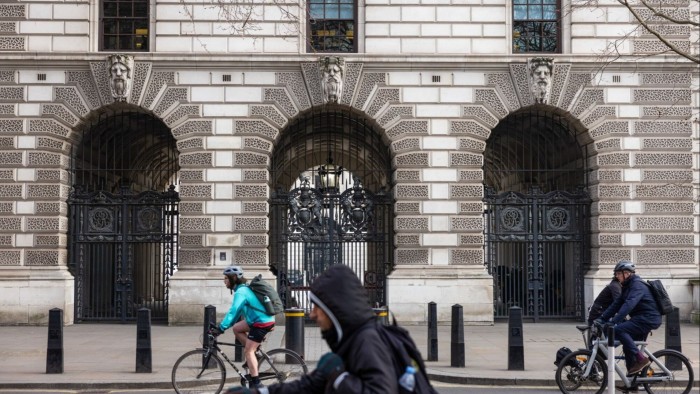Unlock the Editor’s Digest for free
Roula Khalaf, Editor of the FT, selects her favourite stories in this weekly newsletter.
The writer is professor of economics at King’s College, London, and a former member of the Bank of England’s Monetary Policy Committee
The discussion on the UK fiscal position is focused on whether it is consistent with the government’s self-imposed fiscal rules. As that becomes more doubtful, it leads to debate about whether these rules should be modified, and the IMF has recently offered its own advice on the matter. While the UK will face difficult choices to align spending with available resources in the longer term, the fund argued further refinements of the fiscal framework could help minimise the frequency of policy changes.
The UK is no stranger to the game of revising rules that a government is worried about meeting.
Institute for Government data cited in a House of Lords report last year showed that fiscal rules in the UK had an average life of only four years, shorter than in any other major country.
But the emphasis on the rules misses the point. Anyone who doubts that the national debt is a burden can think of the simple arithmetic. With a national debt of 100 per cent of GDP, not much larger than today’s level, 4 per cent of GDP needs to be collected as taxation simply to pay the interest on it — £100 of borrowing today in effect becomes £104 to be repaid next year. Instead of repaying, the debt can be rolled over but unless the interest is paid the debt will cumulate.
This does not matter if incomes are rising fast enough. With 5 per cent money income growth, a debt of £104 in a year’s time is more affordable than a debt of £100 this year. But rapid money income growth comes either through growth in real GDP or through high inflation. The prospects for the first are not sufficiently good to be able to rely on it, while the Monetary Policy Committee is supposed to prevent the second from happening. Sustained growth in real GDP of even 2 per cent a year is not in prospect.
In these circumstances, the national debt should be used as a buffer, allowed to rise in response to adverse economic shocks and then driven down in “normal” economic times. The trouble is that, because economic performance has been poor for nearly 20 years, the debt was allowed to increase sharply in response to shocks — the financial crisis, Covid-19 and the recent gas price surge — while reducing it was always something to deal with in the future. The current fiscal rules do not materially address this.
We frequently hear the argument that borrowing to invest is different from borrowing to consume. On this there are two points to make. Investing in, say, hospitals is unlikely to have a large impact on national income, but the interest on the borrowing to finance them still has to be paid. Also, future virtue — limiting future borrowing to financing investment — does not address the fact that we have the existing debt to deal with.
It is true, of course, that, relative to GDP, the national debt was much higher after the second world war. But those who draw comfort from the fact that this was managed might stop to think about the mechanisms that were used.
Recommended
First, although real growth was higher than it is at the moment, the main tool was inflation. Second, interest rates on government debt were held down by imposing regulations on institutional investors. Banks were required to have large holdings of government debt, for example. Perhaps the focus on getting pension funds to invest in British assets shows the shape of things to come. Third, international movements of capital were controlled. Foreign currency for ordinary holiday-makers was rationed to stop people evading the regulations on capital movements.
The politics of the current situation are, of course, dreadful. Tax increases to pay for the NHS or even rearmament are easier to sell to the public than ones to reduce the national debt. So a more regulated future is likely.
The best advice from economists would probably be to begin a programme of material debt reduction now. But that, of course, is not going to happen. The consequence is a much more unstable future given likely heightened market volatility at times when the debt burden comes into focus. The risk of higher inflation is, itself, likely to lead investors to demand higher interest rates, making things even worse. On top of this, investors are likely to seek a higher risk premium for UK assets because of the uncertainty.


